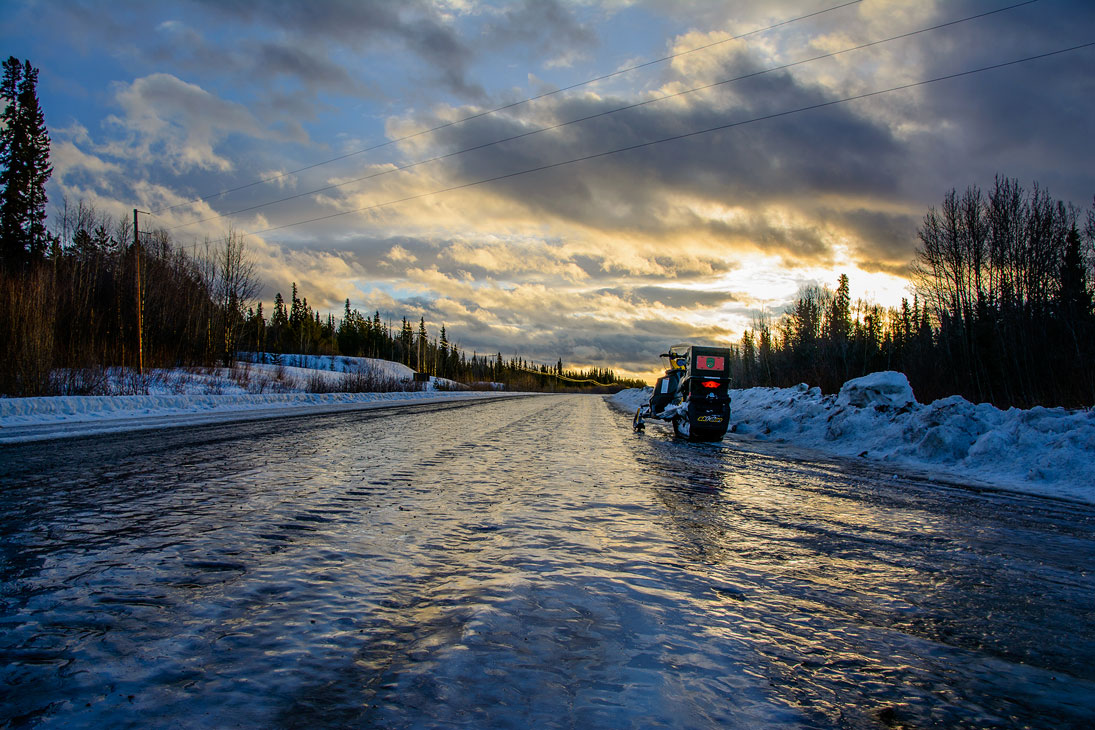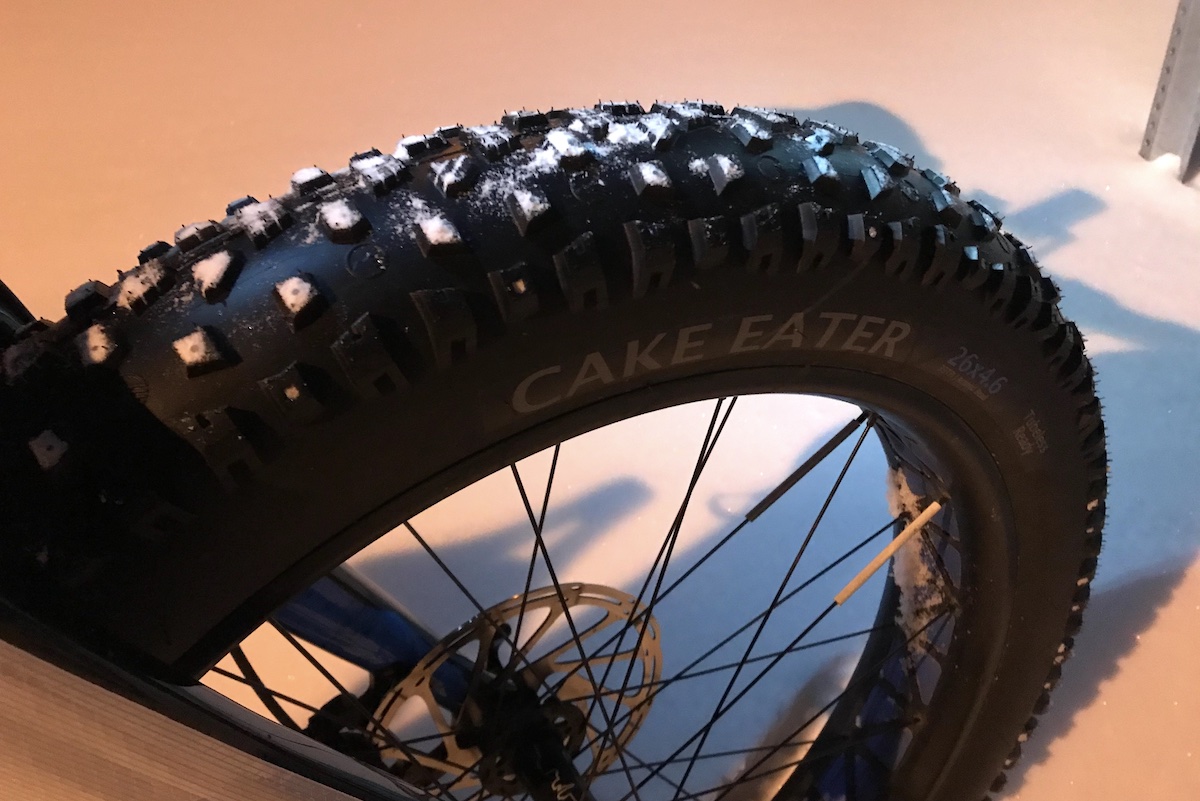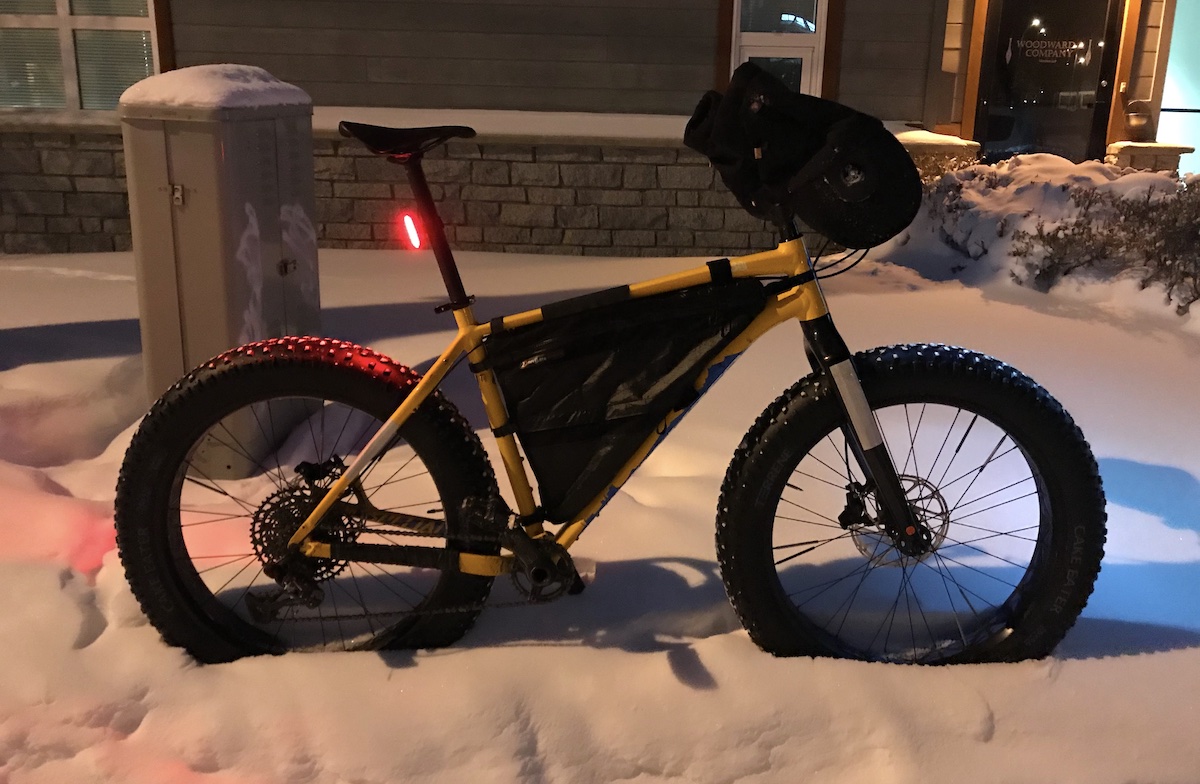Review: Terrene Cake Eater 26x4.6 33 TPI studded fat bike tires
For the past couple of winters, I've run a pair of 45NRTH Vanhelga tires on my fat bike. When conditions are snowy or packed snow, the Vanhelga tires have been great. They are light, grippy and even at 26x4, they have surprisingly good float in deeper snow.
Unfortunately, the Yukon's typical winter weather patterns are changing. In the old days, it would generally get cold and stay cold – and sometimes get really cold for at least a month straight – all winter long.
Recently, we've been experiencing more freeze-thaw cycles. This results in our large piles of snow melting and within a matter of days, we have sheets of ice that cover roads, driveways and sidewalks. It then gets cold again, snows and now we have sheets of ice covered in snow.
Combine sheets of ice covered in snow with cold rubber tires, and you can probably guess what happens.
Here's a photo taken earlier this week in Teslin, Yukon.

The experience of riding your bike on ice is akin to a waterslide. But, instead of slipping around and splashing into a warm pool you suddenly end up on your back sliding downhill into trees, a ditch or worse, moving traffic. I've experienced all three.
Thus, this fall I decided to purchase a pair of studded fat bike tires.

There are plenty of options for studded fat bike tires. Most cost a lot of money.
Studded fat bike tires: Expensive, more expensive and wildly expensive
For example, the 45NRTH Dillinger 5 is $250 per tire. A 45NRTH Wrathchild Fat tire is even more at $320, and a Wrathlorde is $340.
Low cost is where the Terrene Cake Eater shines. The Cake Eater model I bought? $180 per tire.
The Cake Eater studded tire comes in 120 TPI and 33 TPI versions. I chose the 33 TPI model because it was in stock, and cheap.
TPI stands for threads per inch and refers to how the tire's casing is made. A lower thread count translates to a stiffer ride.
Coming from the 60 TPI 45NRTH Vanhelga, I was surprised to learn how much losing those extra 27 threads per inch negatively impacts the ride.
The value of a higher thread count
The Terrene Cake Eater is a noticeably stiff tire. It does not smoothly bend and conform to bumps or changes in the trail surface as a higher thread count tire would.
I've tried different air pressure combinations – I usually ran 6 PSI front and 8 PSI rear in the Vanhelga's, but have now settled on 5 PSI front and 7 PSI rear with the Terrene's – in order to get the Cake Eater tire flexing more.
Without its flat tip studs to add some traction, I feel the Cake Eater would be a poor tire choice for our type of snow. That is, light and often hard packed. And now, ice.
As I said, the lack of a supple ride is offset by the grip benefit of the studs. The tire's flat tip studs have saved my bacon already a few times this winter; commuting and on trail rides. Those situations made me very thankful for the extra grip of the tires.

Would I buy the studded 33 TPI Terrene Cake Eater fat bike tires again? Probably not.
Am I going to keep riding them until they wear out? Absolutely.
If I were to start over and buy a set of studded fat bike tires, I would go for a higher TPI casing model: at least 60 TPI and maybe even 120 TPI.
It would take me longer to save up the money to purchase a pair of tires that are 60% more expensive than the Cake Eaters, but I feel it would be worth it. Fat bike tires last years.
In the meantime, I'll keep riding the Cake Eaters and enjoy staying upright.